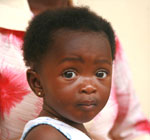August 2010
A study in Zimbabwe assessed the feasibility of HIV-positive women expressing and heat-treating (EHT) all breastmilk given to their infants after 6 months of age. Results were presented in August in The Journal of Nutrition. Twenty women received an initial demonstration, with an observed practice, of an EHT protocol, the materials (cooking pot and glass jars, soap, and a lidded plastic storage container) needed for safely heating milk. The study provided mothers with 21 supportive home visits and observed feedings over eight weeks, with daily visits during the first week.
Expressing and heat-treating breastmilk was implemented correctly during 96 percent of observations. All participants said they had family support, and none felt that EHT increased stigmatization associated with HIV infection. In addition to family support, an ongoing campaign promoting EHT as a means to sustain breastfeeding for all mothers probably contributed to reduced stigmatization, as did the recruitment process, which allowed mothers who feared stigma to decline participation. Average daily milk consumption peaked in weeks 2 to 4 at 479 ml. Mothers continued the practice for an average of 4.5 months, with inadequate production cited by 19 women as the reason for stopping. Infants who consumed a higher proportion of total energy, in comparison with complementary foods, from expressed and heat-treated milk experienced more improvement in weight and length for age.
The authors concluded that in countries implementing the 2009 World Health Organization infant feeding guidance, expressing and heat-treating breastmilk may be a useful interim strategy in the temporary absence of antiretroviral medications or as a strategy for safely providing breastmilk after 12 months.
Date: Oct 4, 2010 | Category: Research highlights
